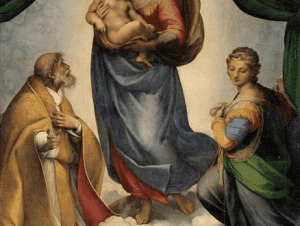In the pulse of the aesthetic universe, few works pulsate as vividly as ‘Heart of the Andes’ by Frederic Edwin Church. This remarkable artwork, created during the restless current of the 19th century, resonates with echoes of a period in history brimming with transformative influences. An exploration into this painting’s historical fabric reveals the intertwining threads of both the artist’s personal perceptions and the societal conditions of the time, casting an enlightening sheen on the philosophical backdrop of Church’s masterpiece. A deep dive into the nuances of his painting style, illustrative of his pioneering spirit and meticulous attention to detail, enables us to savour the intrinsic charm of the Andean landscape as seen through his eyes.
Understanding the History and Perspectives
Unveiling the Tapestry of Time: Frederick Church’s ‘Heart of the Andes’
In today’s virtual gallery tour, we’re zoning in on one of the most admired works of American landscape artist, Frederick Edwin Church: ‘Heart of the Andes.’ This grand canvas, famed not just for its breathtaking aesthetics but also for its deep historical relevance, provides valuable insights into the era in which it was created and the artist himself.
Circa 1859, a world entranced by the wonders of travel and exploration stood as the backdrop for Church’s creation of ‘Heart of the Andes.’ The Victorian era, poised on the brink of rapid advances in technology, science, and industry, was a fascinating space for the development of landscape art.
Heavily influenced by the cross-disciplinary sciences of the time, Church’s detailed renderings of geographical features and biotic life were not just beautiful art but reflective of an amateur scientist’s keen observation. A beacon of progress and enlightenment, ‘Heart of the Andes’ encapsulates the spirit of an era feverish with the conquest of nature and knowledge.
Yet, beyond the progressive Victorian mentality, the painting also reveals a glimpse into Church’s personal experiences. From his travels to Ecuador, Colombia, and other parts of South America, Church showcased his stark awe of the natural landscapes and the somewhat etheric beauty of the Andean mountains. The composite view expressed in his brilliantly lit canvas was an artistic triumph reliving the grandeur of these regions.
Church’s fascination with the exotic finds a curious resonance in the Victorian taste for the ‘other.’ The spectacle of a foreign landscape presenting the unfamiliar flora and fauna against the serenely indifferent mountains was a tantalising window into an alien world. The sense of escapism offered by Church’s painting was much like a promise of adventure, treasured by a society encased in domesticity and decorum.
The unique exhibition strategies used by Church further provide an insight into the artist’s perceptions. Displaying the ‘Heart of the Andes’ alone in darkened rooms, illuminated by gaslight, Church constructed an immersive viewing experience. It lent the beholder a sense of exploration, of standing right in the heart of the Andean wilderness, and of kinship with the sublime natural world.
In its sumptuous complexity and rich context, Frederick Church’s ‘Heart of the Andes’ offers more than a stunning spectacle. It opens a portal into a vibrant historical era and provides an intimate look at the artist’s inner world. It encapsulates an ethos, a culture, and a timeless reverence for natural beauty, making it an indelible part of global artistic heritage.
As we walk away, leaving the shaded valleys and gleaming peaks behind, the painting continues to resonate. ‘Heart of the Andes’ is a testament to the lasting legacy of art that is not merely seen, but felt and experienced in all its vivacity.

Artistic Details and Techniques
Unravelling the Charm of ‘Heart of the Andes’: Frederick Church’s Illustrative Innovations
Not just a landscape painting, but a living tableau- Frederick Church’s ‘Heart of the Andes’ is the epitome of an immersive aesthetic experience. While earlier insights into this masterpiece familiarise us with the painting’s historical undertones, Church’s scientific precision, and the Victorian infatuation with the exotic, a deeper exploration of his artistry unveils the magnetic appeal of the painting.
Church’s graphic attention to detail is a cornerstone of his brilliance, harnessing sophisticated blends of detail and depth. Cast aside mundane perceptions, ‘Heart of the Andes’ demands one’s full attention, enchanting the viewer into an exploration of Church’s world.
In the midst of a tropical and lush concerto of verdant foliage, the eye naturally gravitates toward a humble wooden cross in the painting. A seemingly inconspicuous subject, it cleverly anchors the panorama. It’s as if Church is guiding the viewer’s gaze around the canvas, urging us to appreciate the multitude of intricate elements he so deftly manifests. Present is a harmonious interplay of nature and civilization, with the landscape punctuated by subtle details revealing human activity. A cursory glance might miss these hints, further showcasing Church’s prowess in illuminating intricacies without overpowering the grander scheme.
Adventuring further into the painting, he has effortlessly captured the majesty of the mountain ranges, with the broad sweep of the Andes serving as a formidable backdrop. Through his perceptive use of tonal contrast and atmospheric perspective, he has invincibly encapsulated the depth and expanse of the setting and played with light and shadow to articulate the formidable magnitude of the mighty Andes. This innovative technique enables the viewer to virtually breathe the crisp mountain air and immerse themselves in the grandeur of the scene.
Even a glance at the cascading waterfall pouring from the majestic peaks to the tranquil lagoon demonstrates Church’s commitment to replicating nature’s essence. Each ripple and wave is painstakingly reproduced, the water realistically reflecting the surrounding verdant splendour and azure skies.
Church went beyond painting a mere depiction of geography – he painted a narrative. He intricately wove the elements of his painting to create an orchestrated balance between the immense and the intimate. His use of creative detailing and innovative artistry techniques not only makes ‘Heart of the Andes’ a remarkable sensory experience but also resonates with a broader audience, hitting the perfect chord between allure and intrigue.
It’s his exacting precision in rendering the minutest graphic details and crafting a design-language of his own that contributes to the enthralling allure of this timeless masterpiece called ‘Heart of the Andes’, immortalising Church’s legacy in the grand annals of art history. Indeed, ‘Heart of the Andes’ magnificently captures a moment frozen in awe-inspiring grandeur; a testament to Church’s passionate affair with the beauty and majesty inherent in the art of landscape paintings.

Interpretation and Relevance
In looking at ‘The Heart of the Andes’ now, an important aspect to consider is how the meaning and perception of the painting have fluctuated over the years. Brought to life in an era before digital technology, this magnum opus by Frederick Church revealed the depth, beauty and adventure of the South American landscape to the Victorian audience in breathtaking detail. Today, amidst an array of digital landscapes, the skill and scientific precision that went into crafting this hand-painted marvel can enthral audiences in a new way.
Delving deeper into the composition, one cannot ignore the striking presence of the wooden cross amidst the lush greenery. A symbolic nod perhaps to the intrusion of civilisation into the heart of nature that was the Andes. The contrast between nature’s untouched beauty and its encroachment by man is certainly a narrative that continues to resonate with today’s audiences.
Speaking of contrasts, the interplay between the nuances of light and shade is another factor that sets this painting apart. The way Church captures the atmospheric perspective, painting the mountain ranges in soft, muted tones while the landscape in the foreground is detailed in vivid colours, brings a sense of depth and realism that holds up remarkably well even in the face of today’s high-definition digital art.
At a time when dealing with global warming and environmental deterioration is a key concern, ‘The Heart of the Andes’ sews a narrative about the harmonious coexistence of nature and civilisation, maintaining its relevance and intrigue today. The painting’s delicate balance between the untouched purity of nature and the traces of human civilisation impresses upon the viewer the necessity for balance and sustainable cohabitation.
Frederick Church was well-regarded for his scientific precision and attention to detail. However, it is the emotion that the painting invokes – of awe, wonder, and respect for nature’s grandeur – that has woven its way into the fabric of art history, ensuring ‘The Heart of the Andes’ retains a unique allure and intrigue over 150 years later.
The appealing narrative crafted within ‘The Heart of the Andes’ challenges artists and viewers alike to question the boundaries and intersections between nature and civilisation, between scientific precision and artistic interpretation. As viewers in the present day marvel at the brilliance of the colours, the accuracy of the details, and the depth of the narrative, Church’s legacy in the art world leaves an indelible impression.

Ultimately, ‘Heart of the Andes’ is a testament to the profound power of art to encapsulate the zeitgeist of an era, while also tethering it to the timelessness of the natural world. The remarkable depth uncovered in this piece, through the dissection of symbolism and meaning, connects our modern context to the past in a profound discourse of artistic relevance. An understanding of this piece under the wide arch of art history reveals how pivotal it has been in setting the course for the genre of landscape painting and how its influence has permeated subsequent generations. In this respect, Church’s masterpiece continues to beat strong, pulsing with an enduring legacy that resonates with the same intensity as when it was first displayed to an awestruck 19th-century audience.
Recommend0 recommendationsPublished in Uncategorized





Responses